Or how we say in the capital, Madriz!
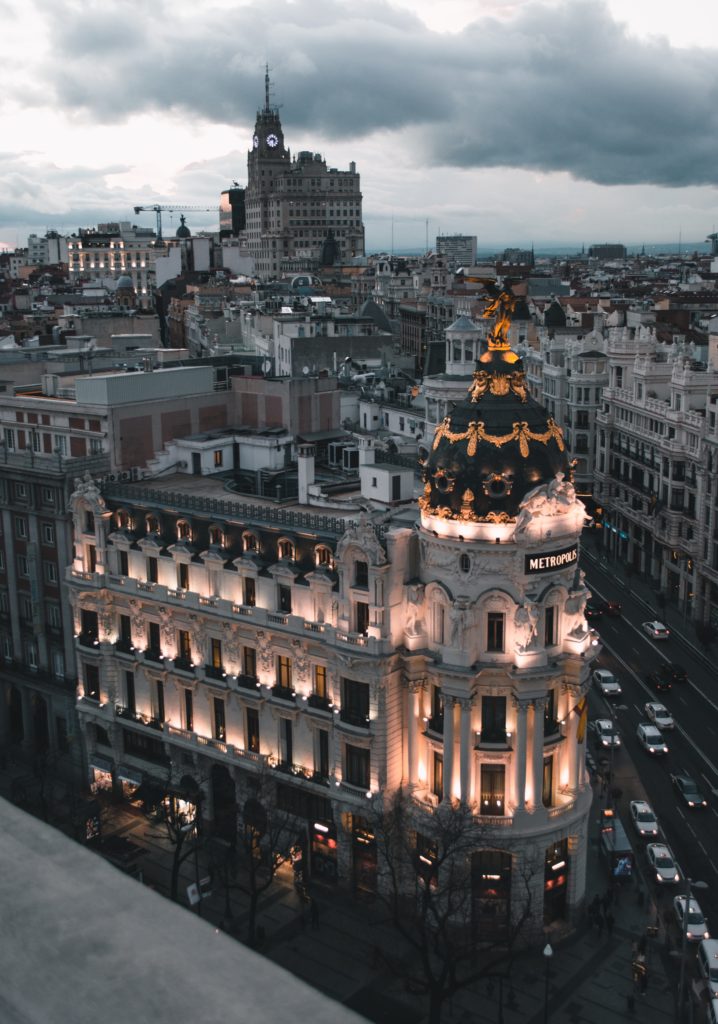
The capital of Spain is a city in the center of the peninsula with a population of more than 3 million. It is not only cosmopolitan and modern but a great example of the Spanish history and culture. From having one of the best museums in the world to the various neighbourhoods that are around the center and have so many different things to offer, such La Latina or Malasaña… Madrid has a lot to offer. Keep reading for a detailed description of most popular monuments.
What to visit in Madrid
Palacio Real de Madrid
It is the largest palace in western Europe with more than 3418 rooms. It was built in 18th century and is few of the official seats of the head of state that is open to the public.
The site was originally the Alcazar of Madrid, a medieval fortress converted into a palace which was part of the official residence of the kings of Spain from year 1561. The building was then destroyed by a fire in 1734 then decided by Philip V to have the new palace in the same location.
The construction was made during years 1738 and 1755 using stone and brick, without wood so it would not be burnt again. To decorate the palace, rich materials were used such as Spanish marble, mahogany wood in doors and windows, as well as some paintings from important artists at the time like Giaquinto, Bayeu and Mengs.
Some of the rooms in the palace are: Salón del trono, Real Armeria, Salón de columnas, Escalera principal, Salón de Gasparini, Real Cocina, Capilla Real and Comedor de Gala.
Additional to the palace, there is the Campo del Moro gardens.
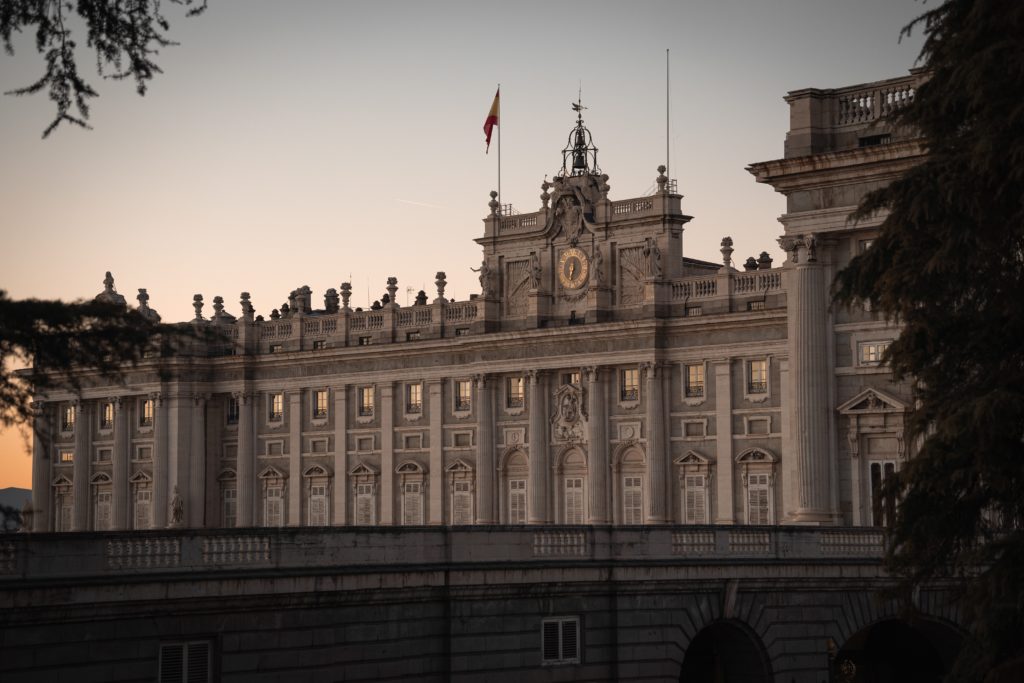
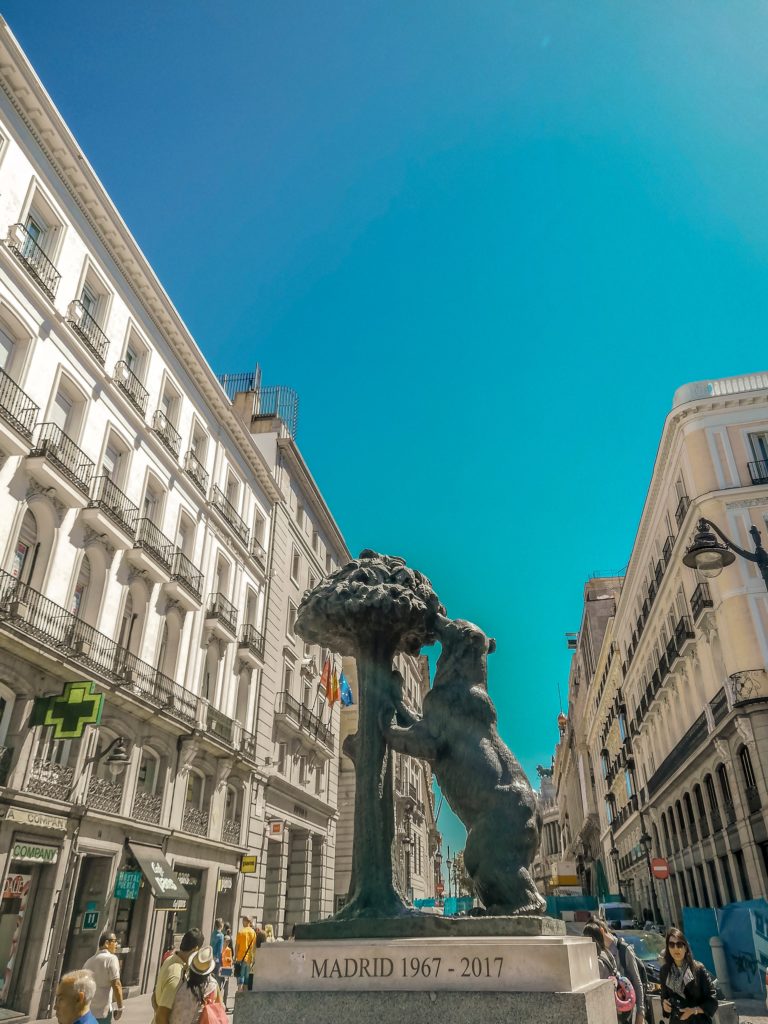
Puerta del Sol
Known as KM. 0 point, this square is probably the first choice for most madrileños when meeting someone as it is a junction for many of the city’s historical and busiest streets such as Mayor, Arenal, Alcalá and Preciados, as well as the starting point for all major radial roads in Spain.
The name originally refers to one of the city’s gate and the building La Casa de Correos is located there, which is the official site of region’s government of Madrid. On top of this building there is a clock with an important meaning for Spaniards, as we celebrate New Year’s Eve gathering with family and friends while looking at this clock at midnight and eating the 12 grapes of ‘luck’.
Another interesting thing to find in this square is the Oso y Madroño, official symbol of the city, is a statue of a best nuzzling a strawberry tree.
Puerta del Sol largest statue is located in the center of the square and depicts Kind Charles II of Spain on horseback. During his reign, the monarch introduced so many progressive reforms and is considered in history as Madrid’s best mayor.
El Retiro
If there is something that Madrid people can be proud of, is the beautiful park El Retiro. The original name is Buen Retiro gardens and was created by Phillip IV in 17th century as a place of leisure for the royal family. The park was developed during centuries 17th and 19th, with a special mention to the Glass palace, a UNESCO World Heritage Site. Originally built in 1887 (designed by Ricardo Velázquez Bosco) as a greenhouse to showcase flora and fauna as part of an exhibition on the Philippines, then a Spanish colony. Today is owned by the Reina Sofia Museum and is used for temporary exhibitions.
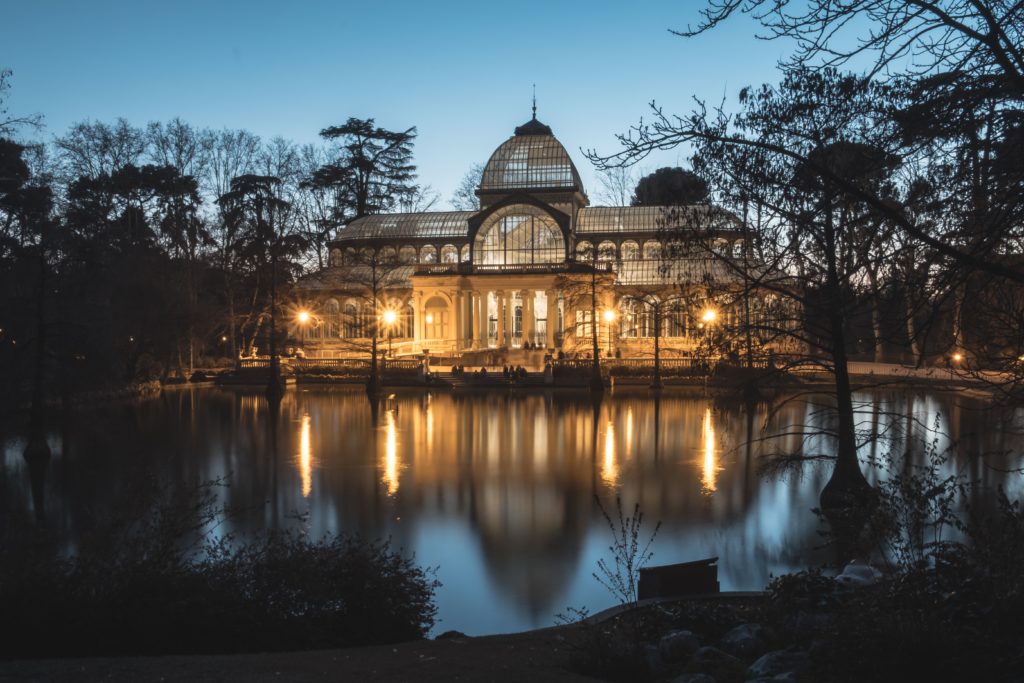
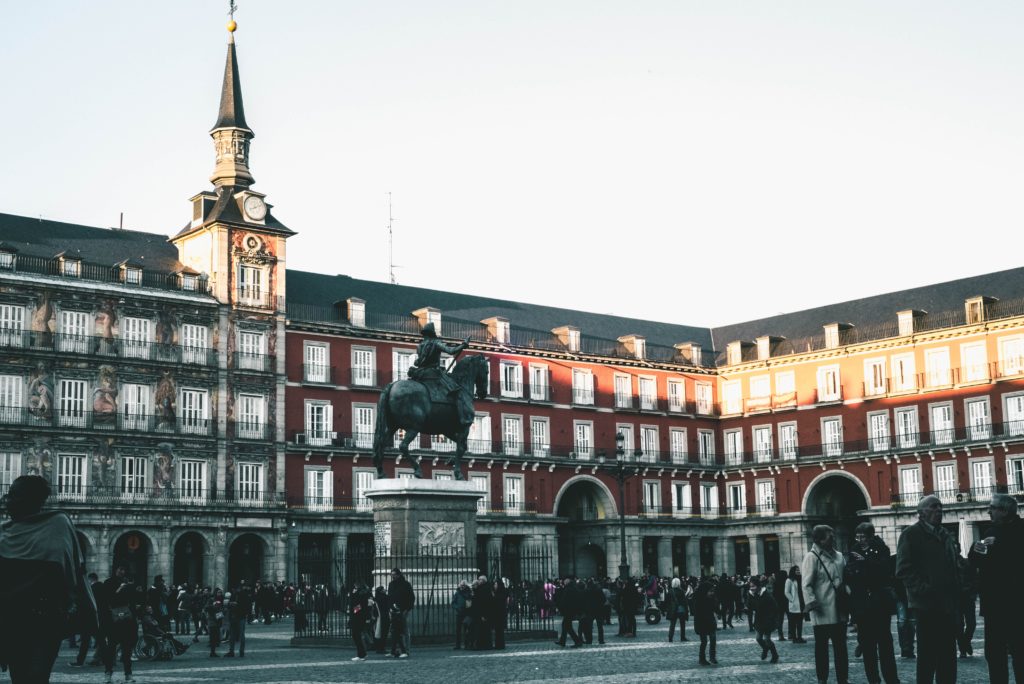
Plaza Mayor
La Plaza Mayor is probably the most characteristic place of a city in Spain, a big square where restaurants and shops are located all around as well as some institutional buildings. In the case of Madrid, this square is part of what’s called El Madrid de los Austrias (the Hasburg district).
Although there are many restaurants and terraces almost in every building of the square, I recommend checking first the reviews or eat somewhere else, as this is a place considered ‘touristic’ and many times that means that they will give you a low quality Spanish food along with a large check. In any case, it is a nice place to go for a walk and maybe try a fried calamari’s sandwich (bocadillo de calamares), one of most popular foods in Madrid. Some of the bars in the streets nearby are known for selling some of the best bocadillo de calamares.
During Christmas season, Plaza Mayor hosts the Christmas market, at least the most important one. Others opened in the last years for example in Plaza España.
Following the original city’s structure of narrow streets and alleys, Plaza Mayor has 10 points of access among the most popular is Arco de Cuchilleros.
Catedral de la Almudena
Madrid’s cathedral is located in the Hapsburg district and was built during XIX century. Inspired by the french 18th century Gothic, elements from cathedrals of Reims, Chartres and León were added. However, the fact that the construction took so long due to lack of investment, changed the original plans of style. Today a mix of architectonic styles: Neoclassic in the exterior, Neogothic inside the building and Romanesque revival in the crypt.
Inside the Cathedral there is a museum that houses effigies of the city’s patron saints: the Virgin Mary of la Almudena and San Isidro Labrador.
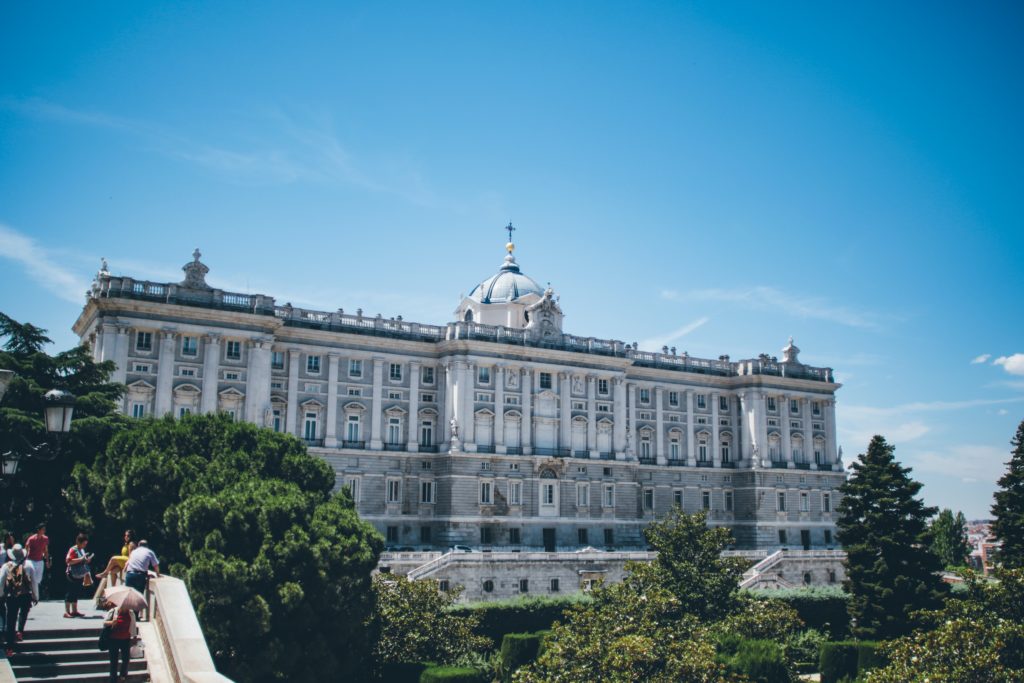
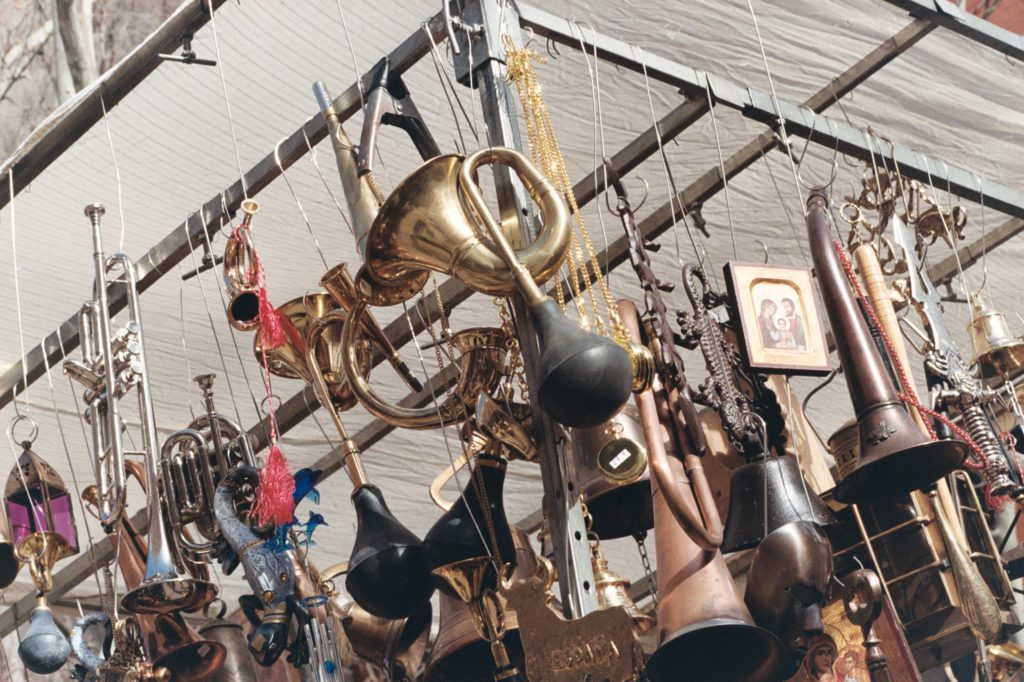
Rastro
This is a place enjoyed by both tourists and people from Madrid. El Rastro is a very popular market in the city center that is installed every Sunday. Its name comes from the marks of blood that animals left in the past when there was some slaughterhouse at the main street. In Spanish, the ‘mark’ made by something can be translated to ‘rastro’.
There are all kind of things you can find in El Rastro, from vintage clothes to costume jewelry, leather pieces and antiques. On both sides of the street there are many traditional bars and restaurants where you can enjoy typical tapas.
If you are more interested about visiting food markets, there are many to choose from. Most popular ones are Mercado de San Miguel, Mercado de San Antón and Mercado de San Ildefonso.
Plaza de Cibeles
This square hosts the monumental building of Cibeles Palace, former Communication Palace and since 2007 the seat of Madrid City Council. Designed and built by Antonio Palacions and Joaquín Otamendi as the headquarters for Spanish Post Office, it was opened in 1909. The building is divided into different spaces such as the Glass Gallery, the Former operations Hall of the Central Post Office and Centrocentro which offers an extensive programme of cultural activities about contemporary art.
There is also a terrace with spectacular view over the city.
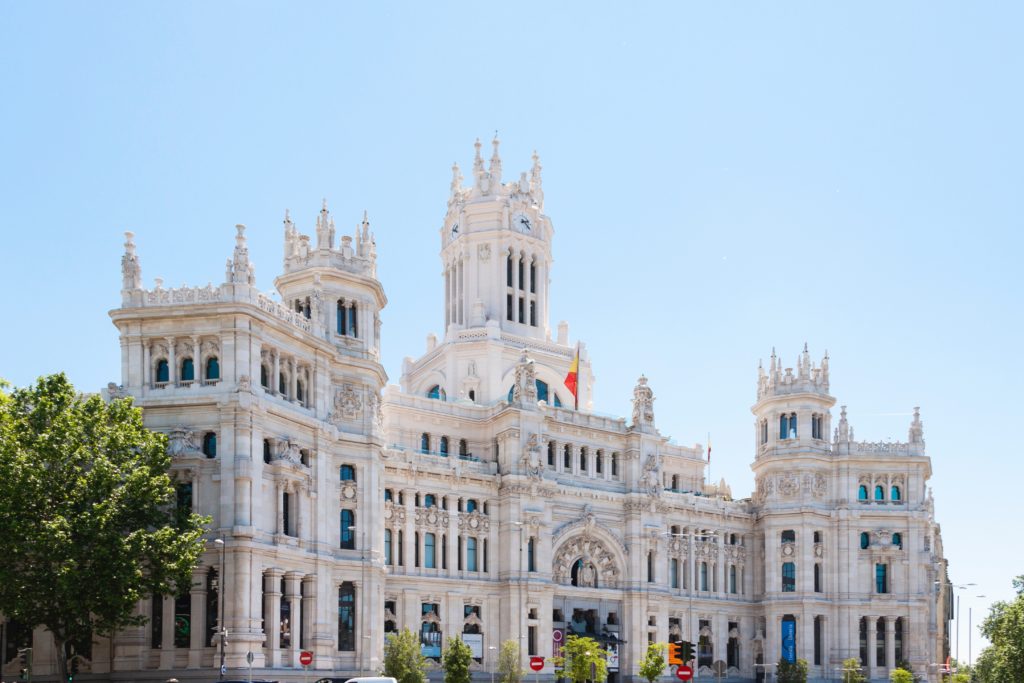
Templo de Debod
Surrounded by gardens in Parque de la Montaña, there is Templo de Debod. This is an Egyptian temple dating back to the 2nd century BC, transported to Madrid’s Cuartel de la Montaña Park. The temple was donated to Spain by the Egyptian government to save it from floods following the construction of the great Aswan Dam.
Círculo de Bellas Artes
Founded in 1880 by a small group of artists, is one of the most important private cultural centers in Europe. One recommendation if you want to visit this place is to go up to the rooftop terrace to enjoy an amazing view of the city.
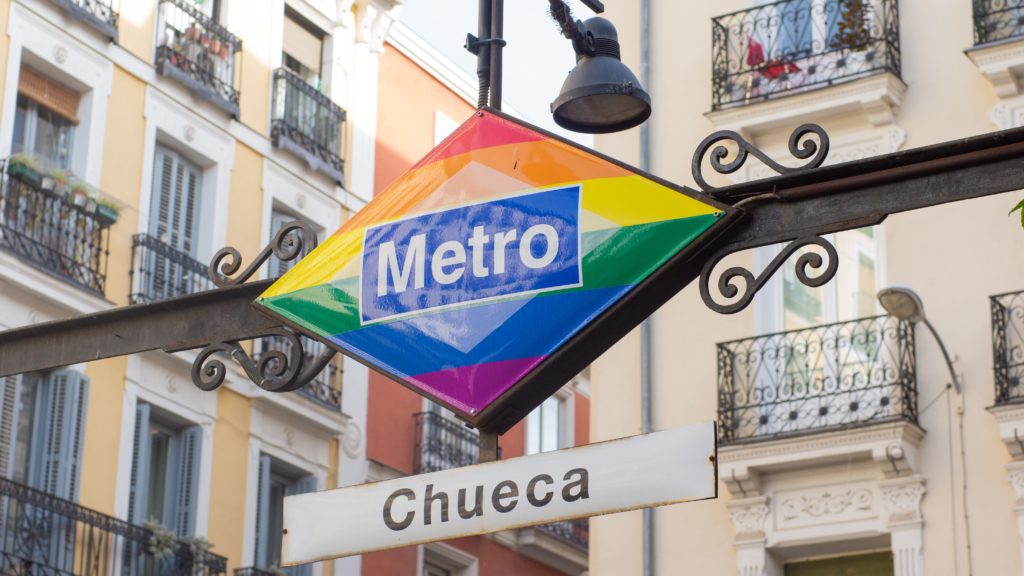
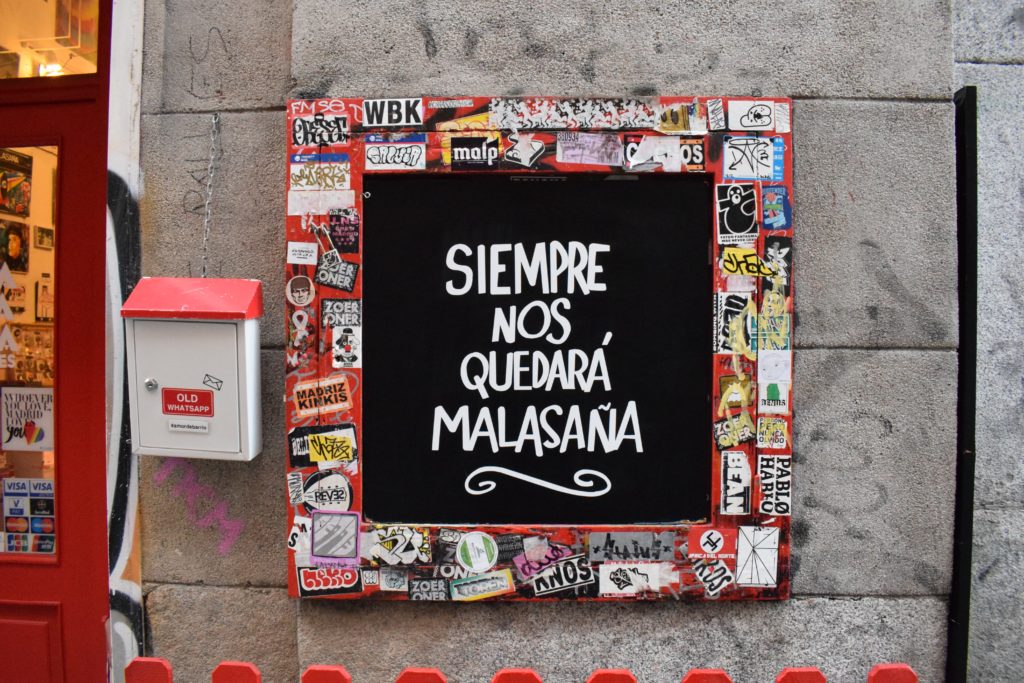
Other interesting places to visit in Madrid and neighborhoods like La Latina, Malasaña or Chueca, and some of the best museums in the world like Prado Museum. You can check this website for more information to visit popular monuments in Madrid.
Click here to discover other cities in Spain.